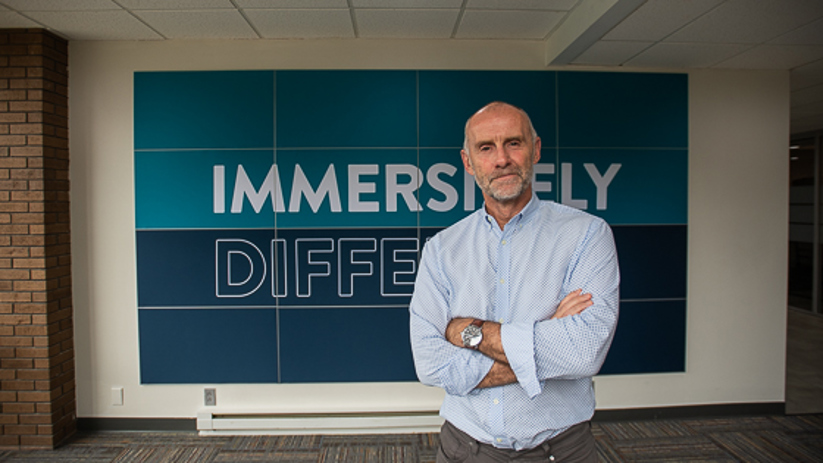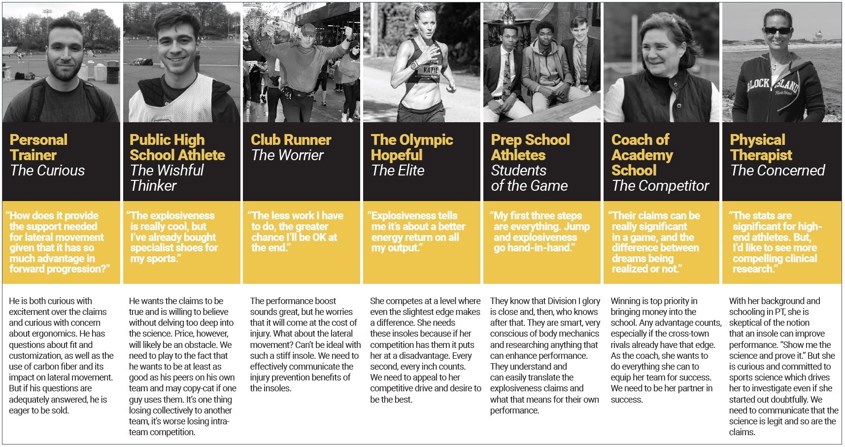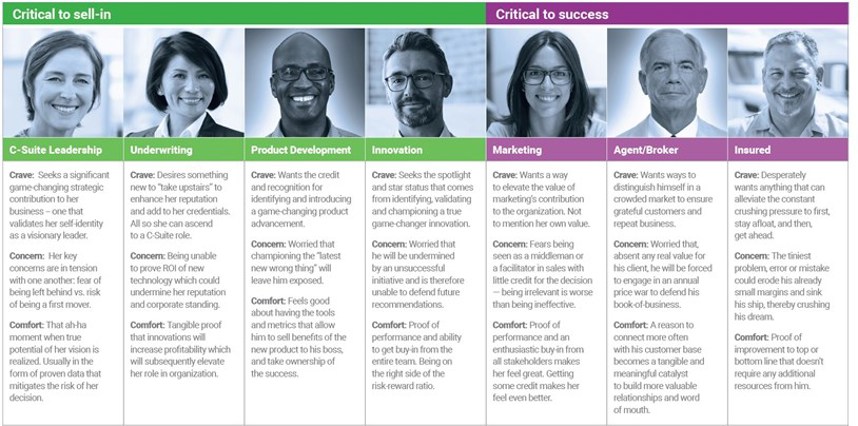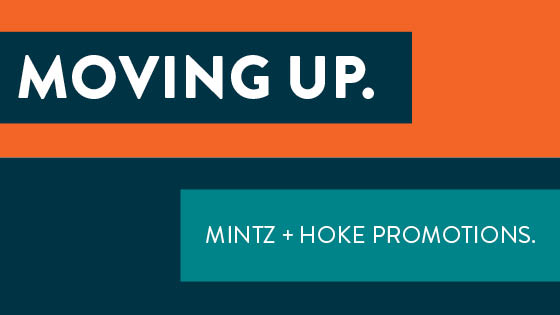What is Being Immersively Different?
Andrew Wood, Principal, Strategy, shares the agency’s 50-year-old winning philosophy, founded as Street Smart, now called Immersively Different, that seeks the humans behind the data.

It was the mid-80s when I arrived from the U.K. and walked into the lobby of Mintz + Hoke’s offices nestled in the bucolic splendor of Avon, Connecticut. I was immediately struck by the distinctive Street Smart messaging and graphics. They were everywhere. Clearly, Mintz + Hoke was properly committed to this thing, and it was how it made the agency different. Street Smart benefitted clients and, importantly, it set an expectation for Mintz + Hoke’s people. It wasn’t just a new business thing or a jaunty slogan. It was everyone’s thing—an effective way to do your job and an opportunity to get ahead.
As a philosophy and a call to action, it’s proven itself over the past 50 years—through recessions, the advent of big data, and a global pandemic. And it’s evolved. We now call it Immersively Different. By nature, it means getting out of our offices and into the hearts and heads of our clients’ customers. To genuinely get to know the humans behind the data. By doing so, we capture how they really think and feel, to develop communications that speak their language, understand their pain points, and inform their decision-making.
Today there are all manner of resources to pull on to get smarter: consultants’ IP, online panels, LinkedIn groups, secondary research studies, social listening and so on. But nothing replaces good old conversation—facetime—and I mean face-to-face time. Okay, maybe using Zoom, but ideally getting into the customers’ space—where they live, shop, play, work or all of them. You want to enter their domain, and be on their home turf, because that’s what your marketing needs to do, right? Enter into their world.
The thing is, everybody says they focus on the customer. But to really work, it’s got to be everything to an organization. You must believe it’s a better approach and ensure everyone embraces it. You have to orient all your work around it and be prepared to change course because of it. For us, being Immersively Different—being acutely focused on understanding the customer in a deeply authentic way—is the guiding philosophy in all we do.
Here are some key principles I’ve learned over the years:
I’ll admit, our Immersively Different philosophy isn’t rocket science (although it’s worked great with rocket scientists!). It’s a case of doing it, committing to it, and believing we’re at our best when we know something revelatory about a client’s customer. Here are a few fundamentals which have consistently proven themselves for our clients over the decades.
Data’s got no soul. This idea can quickly get people upset. Many of our clients come armed with exhaustive quantitative research. But how does it come alive? How do we convert the informative but often unactionable demographics, psychographics and segmentation data into communications that appeal to the heart? That’s where decisions are made. We want the why, behind the what. This is the sweet spot of our process, as we start to reveal the humans hidden in the data points. There’s potency in the thoughts and feelings people express when you meet them in their world. We believe emotion is a brand’s most valuable asset.
Turn up. Get out of your office and into the customer’s world. That’s where you’ll find their head and heart. How can you create for it, if you haven’t in some way felt it? It sounds easy, but sometimes it’s going to feel uncomfortable. Visit the flight line, the production line or the food line. Ever tried approaching a special services operator at a defense industry event needing to explore their emotions about being asked to use a new mission-critical product? Turns out you’re probably an awful lot more uncomfortable than they are. But, if you’re genuinely interested in understanding them as a person, what human doesn’t respond to that?
Talk to your fans—and your foes. It’s easy to talk to people who love your brand, and not as easy with those who don’t. But, it’s hugely valuable. You want to learn why people love or dislike you. Better to talk to five people who are polarized than 10 people stuck in the middle. The old adage is true: “You can sell to love and hate, but it’s hard to market to apathy.” Don’t duck the dissatisfied, cynical or disenfranchised. There may be a huge breakthrough waiting behind the anger of an upset customer.
Listen—really listen. It’s a lost art. You can’t relate in an authentic manner if you don’t understand the vernacular and phraseology used by the people you’re creating for. These words often become the bedrock of inspiring strategy. Jot down direct quotes. They are powerful with clients, who so often find it impossible to stay in their customer’s world. Try to discover a key verbal and visual cue that will distinguish your client, sending a clear signal you “get” their customer. When you’ve got a good one, glorify it, defend it, own it.
Infuse creativity early doors. This is a real differentiator for us. We bring creativity in at the beginning of the process, crafting statements to explore different strategies, terminology and words. We create to get a reaction. People expose their emotions far more readily when critiquing something tangible than trying to express their feelings. We often take a beating, which is when we learn the most. We have a creative team who wants to get involved and learn early on, and is open-minded enough to expose their writing to customers and listen to their reactions. Getting insights early often avoids inefficient creative testing on the back end.
Channel your inner investigative detective. We believe understanding our clients’ customers is a relentless pursuit of insights that often live far below the surface. To really understand what gives your customers energy, you need to get in their world and talk with them. Search for the right clues and keep asking questions. Don’t be satisfied with their initial response. Probe and unfold their internal drivers and motivations. Reveal their unmet needs. We’re big fans of police procedurals where detectives pore over a wall full of photos, clues, facts and figures, eventually spider-mapping their way to a conclusion. Works for them—and for us.
Make sure the customer stays in the room. Convert your learning into customer personas. Use a format that’s instantly accessible and can sit in any conference room to watch over every decision you make. This way, you’ll keep the customer as a human—not a number—front and center. We use neuroscience principles to boil down all the work to three human motivations: Crave, Concern, Comfort. Prioritize and articulate what a person most desires, most fears, and what will bring them peace of mind. It’s massively simple, but powerful knowledge for everybody, involved from sales teams, to marketers, to creatives alike.
Here are a few Immersively Different personas boards:

Making sure your customer is always in the room is a premise we take literally. Keep your customer a constant presence with images of very real people with very real feelings, all distilled down to a key memorable insight.

Many clients need to navigate the complexities of a buying group. Understanding their prioritization is key. Here we use our Crave, Concern, Comfort format as a powerful summary of key insights that will drive strategy, messaging and content creation.
So often it’s one breakthrough insight you unearth that makes a campaign, or turns your initial perceptions on end. Being Immersively Different is as much about being open to what you hear—to getting to the heart of what is real—as it is trusting in it and having the courage to create for it. In this way, by understanding the humans behind the data, as well as the data itself, you develop communications that truly move people to feel, think and act.
Andrew Wood is Principal, Strategy at Mintz + Hoke and has had two stints at the agency spanning more than 35 years. He’s built B2B and consumer brands using the Immersively Different philosophy across industry and the public sector, including OTIS, Deloitte, Pratt & Whitney, Access Health CT, YoCrunch Yogurt, Special Olympics, and the State of Connecticut Department of Transportation, to name a few.
We invite you to stay tuned for more blog posts from our team to learn how using our Immersively Different philosophy across practices continues to elevate client outcomes.


